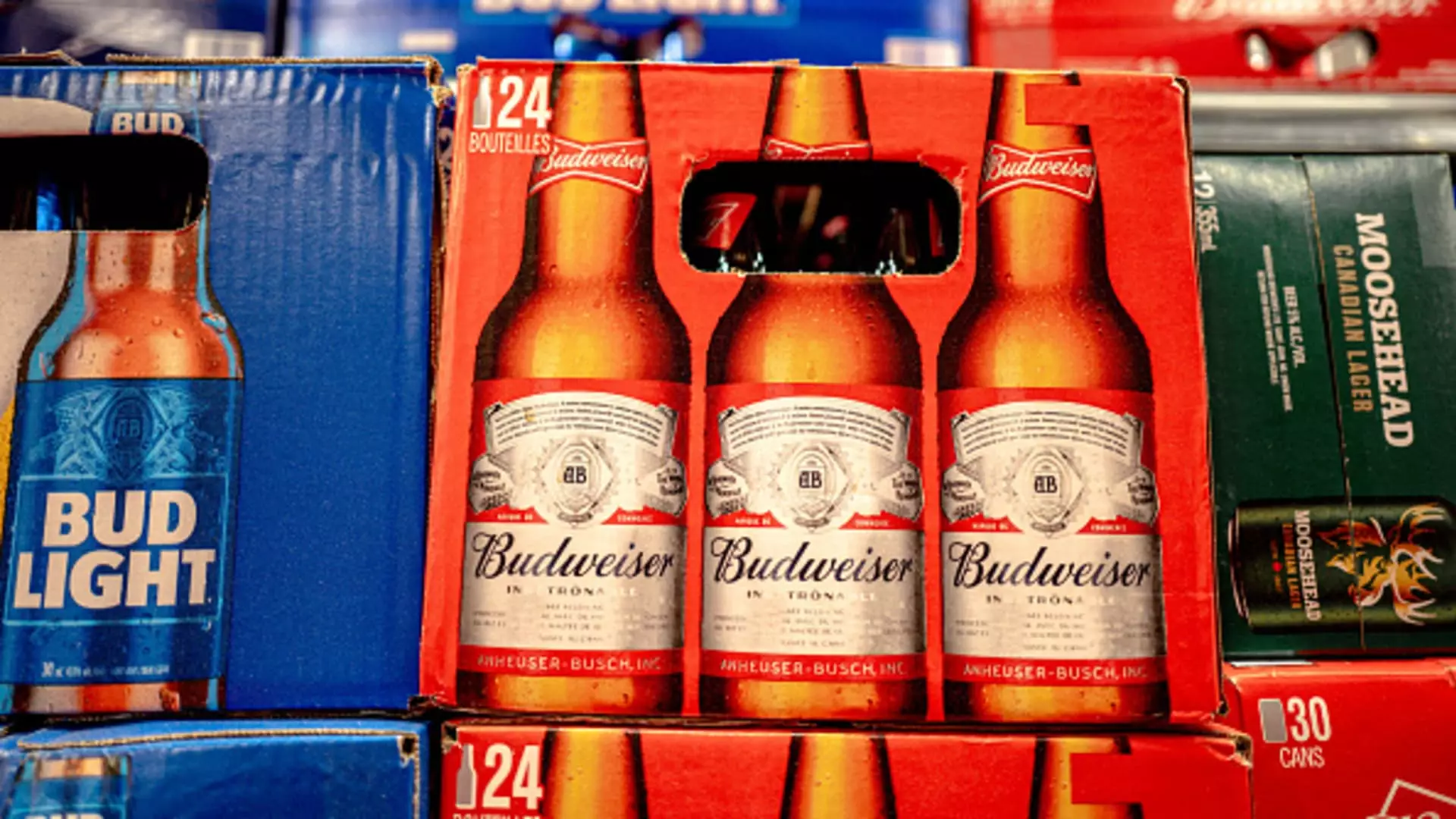On a notable trading day, shares of Anheuser-Busch InBev (AB InBev), the globe’s largest beer producer, surged by nearly 9% following the announcement of its fourth-quarter earnings, which exceeded analysts’ expectations. The company, famed for its extensive portfolio including iconic brands such as Budweiser, Corona, and Stella Artois, reported revenue of $14.84 billion for the quarter, reflecting a 3.4% increase compared to the previous year. This figure stood in stark contrast to the forecasted decline of 2.9% to $14.05 billion, illuminating the disconnect between analyst predictions and AB InBev’s actual performance. By the end of the trading session, the shares closed with an 8.5% increase, showcasing strong investor confidence despite facing headwinds.
Interestingly, while sales figures were positive, AB InBev experienced a 1.9% decline in total volumes for the fourth quarter and a 1.4% dip for the year. The declines primarily stemmed from weakened demand in key markets, notably China and Argentina. The CEO of AB InBev, Michel Doukeris, characterized the downturn in these markets as “very abnormal,” attributing it to broader industrial issues that had a negative impact on consumer confidence. This recognition of external factors highlights the challenges the firm faces, specifically in the dynamic and often volatile global market.
Despite these challenges, Doukeris maintained an optimistic outlook regarding the recovery of beer demand. He underscored the company’s belief in a “vibrant” market as the overall momentum seems stable. This duality—growing revenue alongside declining volumes—illustrates the complexities of AB InBev’s position in an evolving beverage landscape.
Looking towards the future, Doukeris articulated the company’s focus on achieving earnings growth in line with its medium-term goals, expecting an EBITDA increase ranging from 4% to 8% for the year 2025. With a previous fourth-quarter EBITDA surge of 10.1%, the firm is leveraging this momentum to chart future success. However, amidst this positive trajectory, Doukeris identified foreign exchange rates as a significant concern, specifically citing the strong US dollar’s potential impact on operations.
Despite apprehensions about the possibility of U.S. tariffs, Doukeris expressed confidence, dismissing the idea that serious tariff-related discussions would arise in the near future. This proactive stance signals a readiness to adapt to external economic pressures through strategic adjustments rather than merely reacting to immediate challenges.
The global beverage market is currently navigating shifting consumer preferences, notably a trend towards lower alcohol consumption. This cultural shift has not gone unnoticed by AB InBev and its competitors. Similar to how Danish brewer Carlsberg embraces diversification by increasing its portfolio of non-alcoholic products, AB InBev is also poised to capitalize on this emerging trend. Doukeris dubbed the moderation of alcohol consumption a “global trend,” indicating the company recognizes the necessity of adapting its offerings to cater to evolving consumer sensitivities toward health and wellness.
The rise of non-alcoholic products reveals a new dimension of market potential, enabling AB InBev to attract a broader audience. This strategy acknowledges that many health-conscious individuals might shy away from traditional beverages but could be enticed by the availability of appealing, lower-calorie options—which non-alcoholic beers provide compared to sugary sodas or other soft drinks.
AB InBev’s latest earnings report showcases a company navigating a complex landscape with resilience and adaptability. Despite challenges such as declining volumes and external economic pressures, the company appears primed for growth, driven by strategic initiatives addressing consumer preferences and a committed focus on profitability. As the beer giant evolves in response to a changing market, it remains to be seen how well it can balance tradition with innovation, maintaining its status as a leader in the global beverages sector.

Leave a Reply